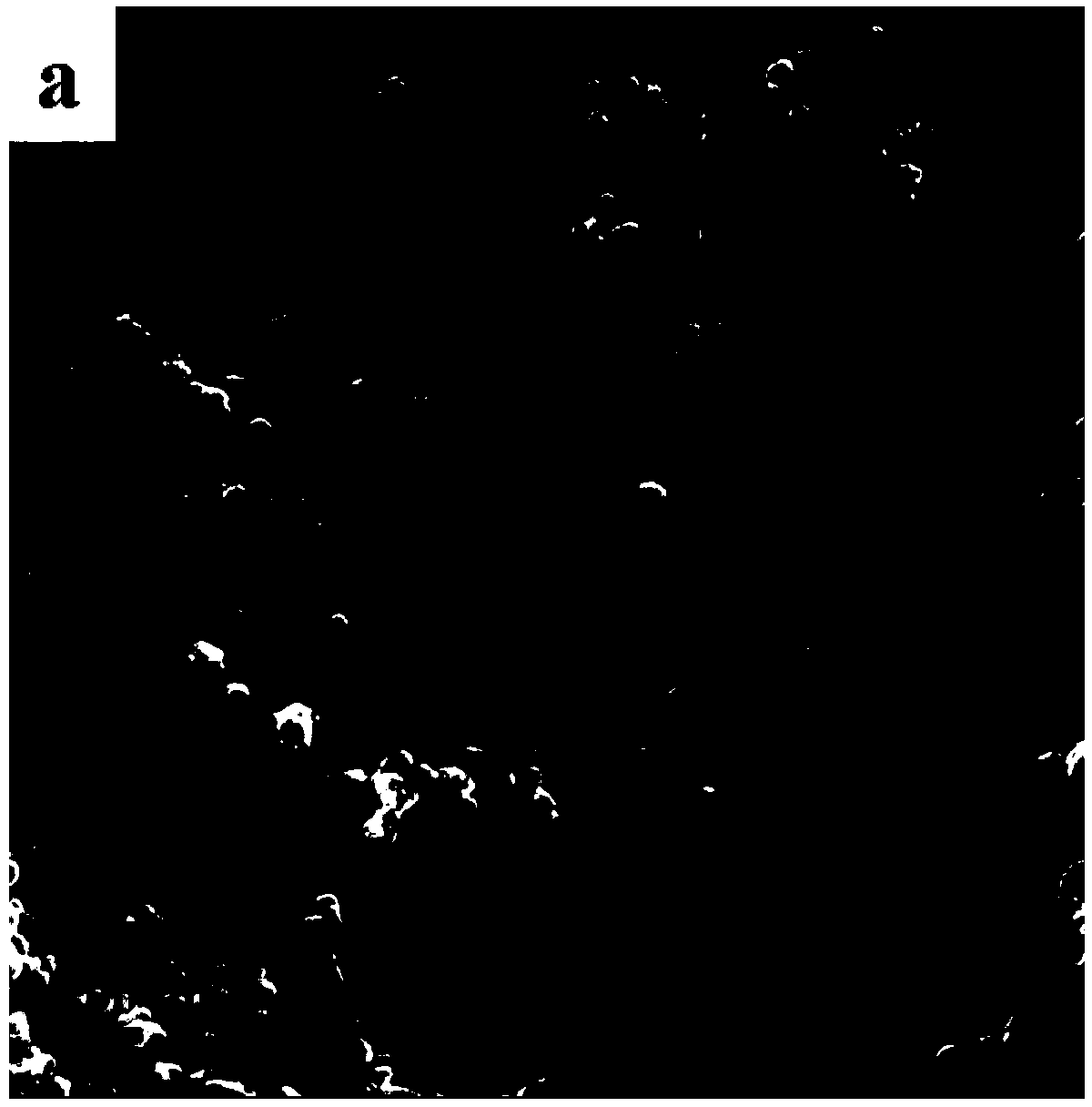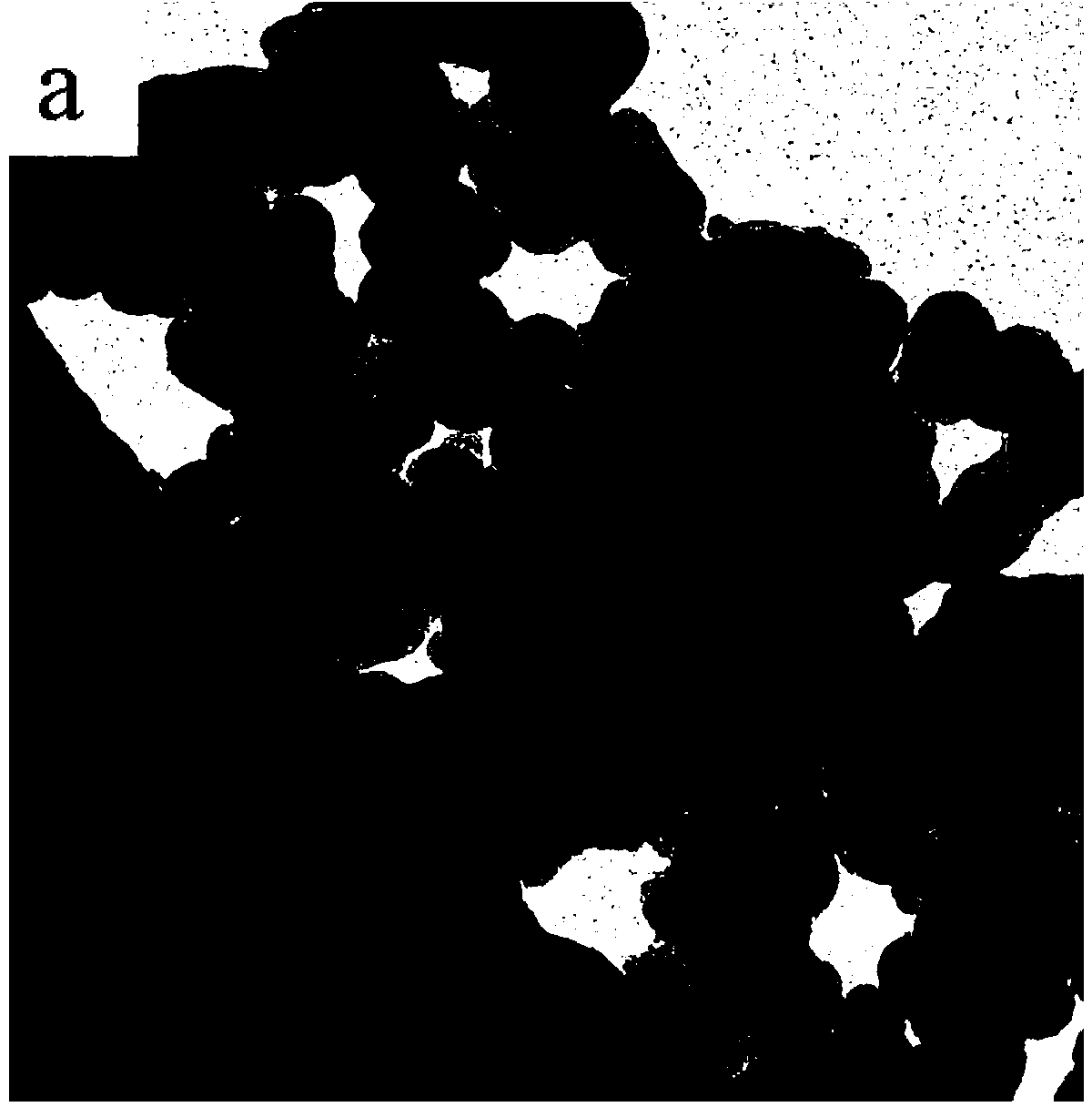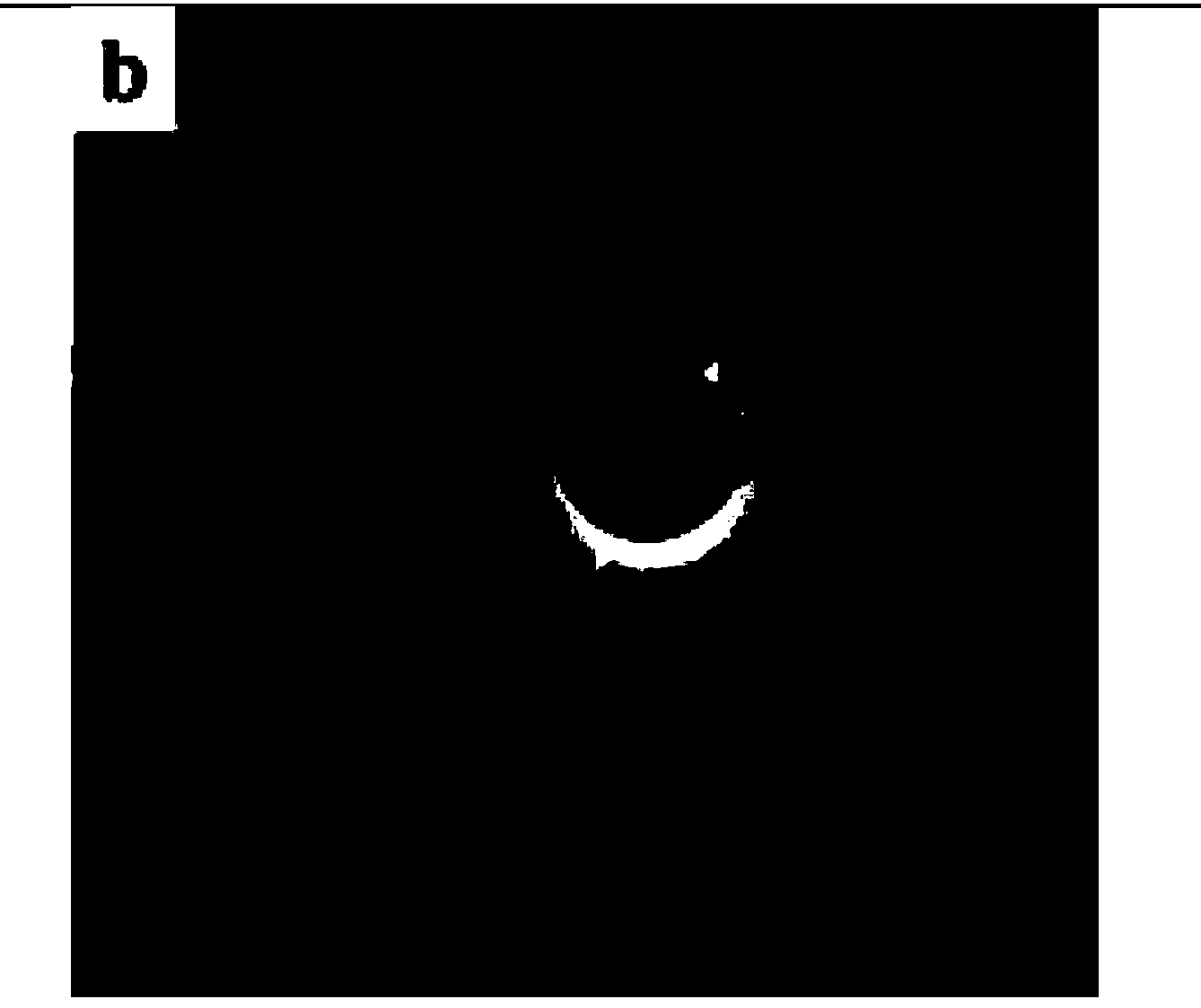Preparation method of graphene quantum dot
A technology of graphene quantum dots and mass ratio, applied in graphene, chemical instruments and methods, nanotechnology for materials and surface science, etc., can solve the problems of unavailable raw materials, low yield, cumbersome preparation process, etc. Achieve the effects of fast preparation process, high yield and simple conditions
- Summary
- Abstract
- Description
- Claims
- Application Information
AI Technical Summary
Problems solved by technology
Method used
Image
Examples
Example Embodiment
[0047] Example 1:
[0048] Add 50g polytetrafluoroethylene (PTFE, 2μm) and 14g Si powder (100nm) to cyclohexane at room temperature, magnetically stir for 1 hour to make it evenly mixed, and place it in a closed explosive after vacuum drying; The electric ignition method initiates the deflagration reaction. After the reaction is completed, the obtained carbon products are collected and placed in a muffle furnace at 300°C for heat treatment to remove unreacted PTFE and NaOH concentrated solutions at 50°C to remove unreacted Si. After cooling, , The product is washed alternately with ethanol and water, and dried in a vacuum drying oven to obtain graphene quantum dot polymer nanoparticles.
[0049] Graphene quantum dot polymer nanoparticles are exfoliated by Hummer method to prepare graphene oxide quantum dots. The specific steps are: weigh 0.5g graphene quantum dot polymer nanoparticles, add 12mL concentrated sulfuric acid and 1.5g potassium permanganate under ice bath conditions Af...
Example Embodiment
[0053] Example 2
[0054] Add 50g of polytetrafluoroethylene (PTFE, 2μm) and 42g of Si powder (100nm) to cyclohexane at room temperature, magnetically stir for 1 hour to make it evenly mixed, and place it in a closed explosive after vacuum drying; others The steps are the same as in Example 1.
[0055] Picture 10 This is a high-resolution transmission electron microscope photo of the prepared graphene quantum dot polymer nanoparticles. It can be seen from the photo that the carbon material prepared by the deflagration method is composed of graphene quantum dots with a size of about 20 nm and a thickness of about 5 Layer graphite structure.
Example Embodiment
[0056] Example 3
[0057] Add 50g polytetrafluoroethylene (PTFE, 300nm) and 14g Si powder (100nm) to cyclohexane at room temperature, magnetically stir for 1 hour to make it evenly mixed, and place it in a closed explosive after vacuum drying; others The steps are the same as in Example 1.
[0058] Picture 11 It is a high-resolution transmission electron microscope photo of the prepared graphene quantum dot polymer nanoparticles. From the photo, it can be seen that the graphene quantum dots prepared by reducing the size of the reactants are slightly larger in size, about 50nm, and about It is a 15-layer graphite structure. This may be due to the small size of the reactant ions leading to an increase in the reaction rate, resulting in an increase in the temperature of the deflagration flame and an extension of the growth process of carbon atoms, so that the size of the graphene quantum dots grown Increased.
PUM
| Property | Measurement | Unit |
|---|---|---|
| Size | aaaaa | aaaaa |
| Thickness | aaaaa | aaaaa |
| Size | aaaaa | aaaaa |
Abstract
Description
Claims
Application Information
 Login to View More
Login to View More - R&D
- Intellectual Property
- Life Sciences
- Materials
- Tech Scout
- Unparalleled Data Quality
- Higher Quality Content
- 60% Fewer Hallucinations
Browse by: Latest US Patents, China's latest patents, Technical Efficacy Thesaurus, Application Domain, Technology Topic, Popular Technical Reports.
© 2025 PatSnap. All rights reserved.Legal|Privacy policy|Modern Slavery Act Transparency Statement|Sitemap|About US| Contact US: help@patsnap.com



